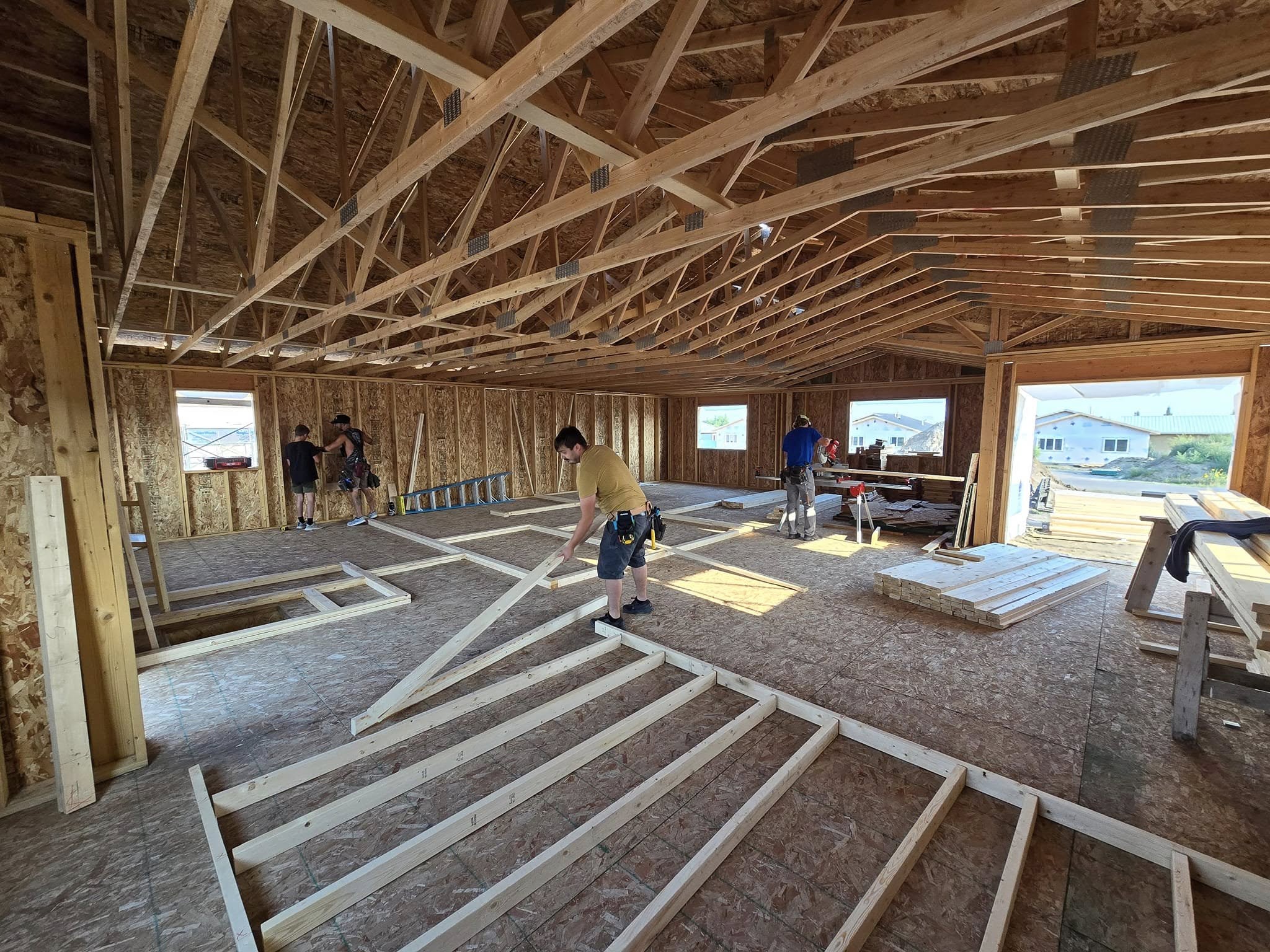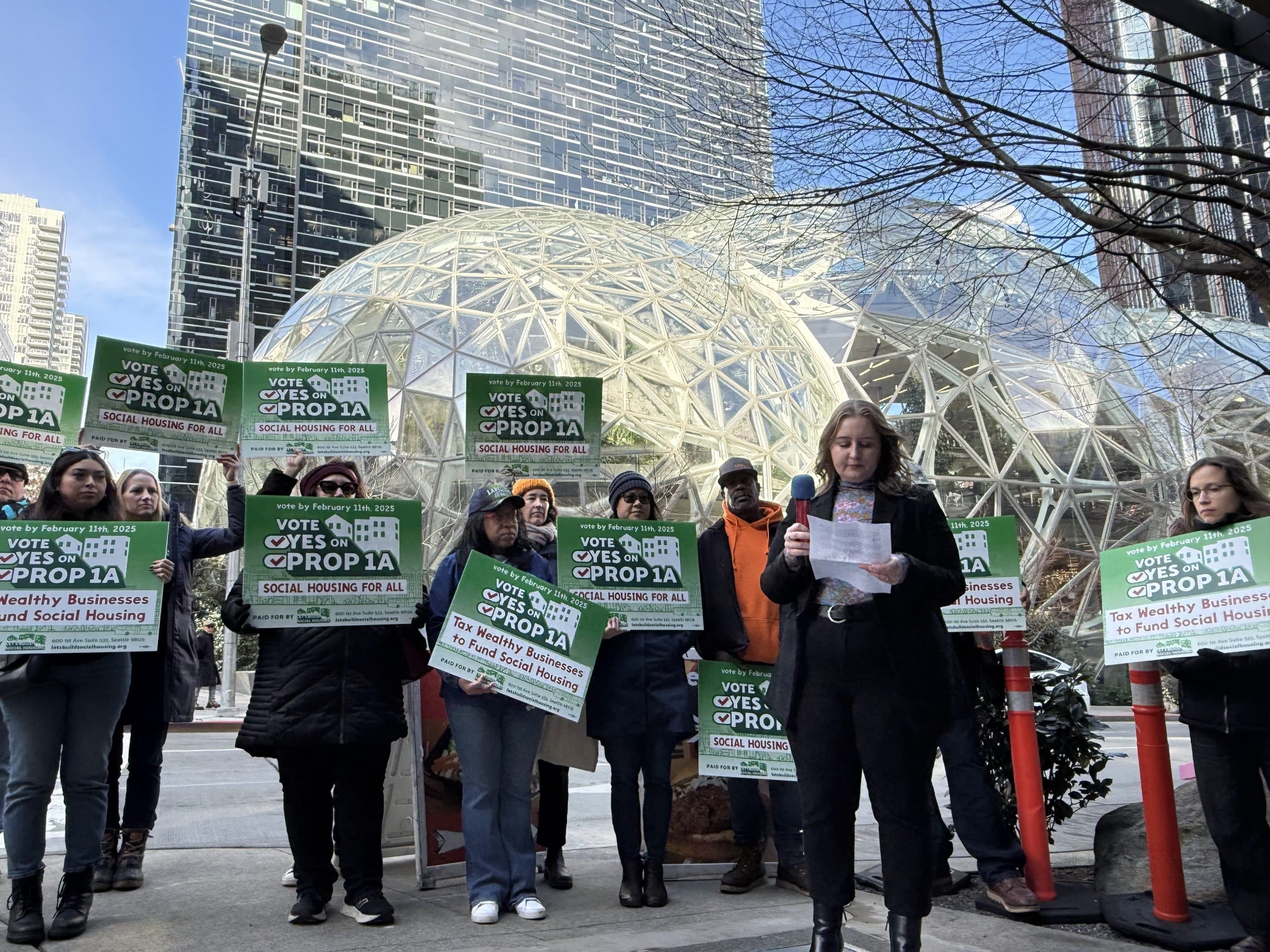
A street in San Francisco. Photo by Paul Sableman, CC BY 4.0 Deed | Attribution 4.0 International
Chinatown CDC is one of San Francisco’s largest nonprofit affordable housing developers, with 36 properties serving 4,500 low-income individuals and families. A number of those properties will need significant renovation and rehabilitation in the coming years. After 15 years, any building needs upgrades to its roof, flooring, paint, appliances, security systems, and more.
That’s true of Crescent Cove, a Chinatown CDC project completed in 2007 in the waterfront Mission Bay neighborhood. The building has 234 units—a mix of studios and one- and two-bedroom apartments—and serves people earning between 50 percent and 60 percent of area median income. The nonprofit also owns a significant stock of old single-room occupancy (SRO) buildings that it acquired and rehabilitated years ago, but which will soon need another round of work to keep in quality condition.
Like most property owners, Chinatown CDC must refinance its mortgages to afford the high-cost renovations. But the thin margins of subsidized rents make it challenging, if not impossible in some cases, to repay the amount of debt it would take to fund those big-ticket rehabs.
In the past, Chinatown CDC would have turned to the Low-Income Housing Tax Credit (LIHTC) program to make up the difference. The federal tax credit program is one of the few sources of debt-free funding available to affordable housing developers to build new housing or rehabilitate existing projects, and the less valuable but easier-to-acquire 4 percent credits have been a common tool for refinancing and rehabbing older properties.
But Chinatown CDC won’t be able to use tax credits for refinancing this time around. That’s because demand for affordable housing financing in hot housing markets such as California, New York, and Washington, D.C., has made it hard to access tax credits for any projects other than affordable housing construction.
How LIHTC Works
To understand why this is happening—and how some proposed reforms might help, let’s take a quick look at how LIHTC works. (For a general overview of LIHTC see this short video, or this longer one.)
LIHTC is a tool that gives private investors a tax break in exchange for investing their money in affordable housing. Affordable housing developers apply for credits that they in turn sell to corporate investors. The housing developers use the revenue generated by the sale of tax credits to help fund construction and investors get a reduced tax bill.
There are two types of LIHTC: 9 percent and 4 percent credits. The IRS provides 9 percent credits to state housing finance agencies on a per capita basis to distribute to affordable housing developers. For instance, this year states received $2.81 per capita, which worked out to more than $110 million in credits for California. The 9 percent credits have always been allocated through a highly competitive process in which state housing finance agencies score developer applications on the merits of their project.
Four percent tax credits are distributed by the federal government and are instead simply first come, first served for applicants. The catch is that in order to qualify to receive the 4 percent credits at least 50 percent of a project’s funding must come from tax-exempt private activity bonds provided by the state. So while there isn’t a cap on the number of 4 percent credits available, a shortage of bonds in some states makes it impossible for every project to qualify.
But in California and other states with hot housing markets, getting those bonds has gotten more difficult. As California’s housing market has continued to boom, demand for 4 percent credits increased dramatically, and therefore demand for bond financing. The state is now receiving about three times more requests for private activity bonds than it has available to allocate, according to California State Treasurer Fiona Ma.
Housing isn’t the only industry eligible for private activity bonds, but most of California’s bonds do go to affordable housing. According to the state’s treasury office, of the $4.3 billion in bonds California could issue in 2021, all but $400 million is being allocated to affordable housing projects.
Adding to the bond market crunch, in 2019 Gov. Gavin Newsom dedicated $500 million to the state’s version of 4 percent LIHTC. That sounds like it should help the situation, until you realize that the state credit carries the same 50 percent bond financing requirement as the federal credit. The amount of bond financing available—which has a federally set cap—hasn’t increased.
California isn’t the only state maxing out its private activity bond cap. Georgia, Kansas, Maryland, Massachusetts, Mississippi, Nebraska, Nevada, New Mexico, North Dakota, Ohio, Rhode Island, Tennessee, Washington state, and Washington, D.C., also maxed out their bond caps in recent years.
In other words, access to bond financing has become a bottleneck in many states. And in California, at least, bonds are not first come, first served: refinancing projects are sent to the back of the line.
“Given where we are with resources, and a governor that’s prioritizing housing, the [California Debt Limit Allocation Committee] has chosen deliberately to focus during the last two fiscal years on new construction,” says Ma.
A Quiet Rehab Crisis
That priority on new construction leaves Chinatown CDC and other affordable housing owners and managers in a tough spot. If they cannot get the requisite tax-exempt bonds from the state, they don’t qualify for 4 percent LIHTC. If they can’t get LIHTC, they often can’t refinance their aging buildings to get the rehab funding they need.
Whitney Jones, Chinatown CDC’s deputy director of operations, says the lack of available tax credits doesn’t necessarily spell disaster for all its buildings. Some, like Crescent Cove, have rents that can probably pay for refinancing without tax credits. But for the CDC’s old SROs serving extremely low-income residents, no credits means no rehab, leaving the buildings to spiral into truly degraded living conditions.
“We have 300-odd units of SRO from 1980s and the only path to getting those things physically healthy over the long term is credits,” explains Jones.
For old buildings that can’t get credits and don’t charge enough rent to refinance, it’s a lose-lose situation. Often building managers will simply defer maintenance until they can get credits or figure out some alternative financing. But putting off major maintenance just amplifies problems and makes them more costly to fix in the end. In some situations, building owners might try to raise rents to help pay for refinancing, but doing so harms residents and, in the case of deeply subsidized buildings, often still isn’t enough to solve the problem, says Jones.
“It’s the public housing problem writ small. . . . If the waterproofing is failing or if you can’t put a new roof or siding on that’s a big deal,” he explains. “It starts to make the building fall apart really fast and make the living conditions miserable. You’re putting lipstick on a pig and eventually it’s going to get recognized as a pig.”
Without bonds for rehab, Ma acknowledges, “at some point we’re going to have assets out there that should have been refinanced and they’re going to go to market value.”
Reforms on Horizon?
Affordable housing developers and housing advocates see some hope in the Democrats’ $3.5 trillion reconciliation bill, which includes many so-called human infrastructure reforms that will address housing, health care, child care, and more.
Though the final details of the Democrats’ human infrastructure bill have not been released, experts expect it to include at least two LIHTC reforms that, if passed, could expand the supply of credits enough to help nonprofit developers like Chinatown CDC once again turn to LIHTC to fund the building rehabs all affordable housing managers must do. The first is a simple increase to the number of 9 percent credits allocated to each state. More credits should help take some pressure off the oversubscribed LIHTC program, but even still, in a state like California, it’s unlikely to be enough.
That’s why many developers, LIHTC experts, and state officials like Treasurer Ma also support a reform to how much bond financing developers must acquire to get 4 percent credits.
“The single most impactful proposal to address Chinatown CDC’s problem, in my opinion, is the proposal for lowering the financing test to trigger credits from 50 percent to 25 percent,” says Peter Lawrence, director of public policy and government affairs at Novogradac, a consultancy that specializes in LIHTC.
If a developer only had to get 25 percent of a project’s funds from the state bond market instead of 50 percent, it would effectively double the number of housing projects that could get 4 percent credits. It likely still wouldn’t solve the problem in California, where the bonds are oversubscribed by three times. But it would help ease the pressure. “Chinatown CDC is not alone in having these challenges,” says Lawrence. “And unless Congress takes action that problem is just going to grow.”
Without reform, California will likely continue dedicating all its tax credits and bond financing for new construction. However, if existing affordable housing is being lost to disrepair or market-rate conversions, new construction won’t help close the gap as much as it first seems it would. A 2020 joint report by the Public and Affordable Housing Research Corporation and the National Low Income Housing Coalition found that 34,215 units of federally subsidized housing in California are at risk of being lost to the private market when their subsidies expire between now and 2025. More than 700,000 subsidized units nationwide are at risk between now and 2029. And that doesn’t account for buildings like Chinatown CDC’s SROs, which are facing financing challenges even without expiring subsidies.
“The more we kick the can down the road,” says Ma, “the more expensive it’s going to be on the back end.”




Comments